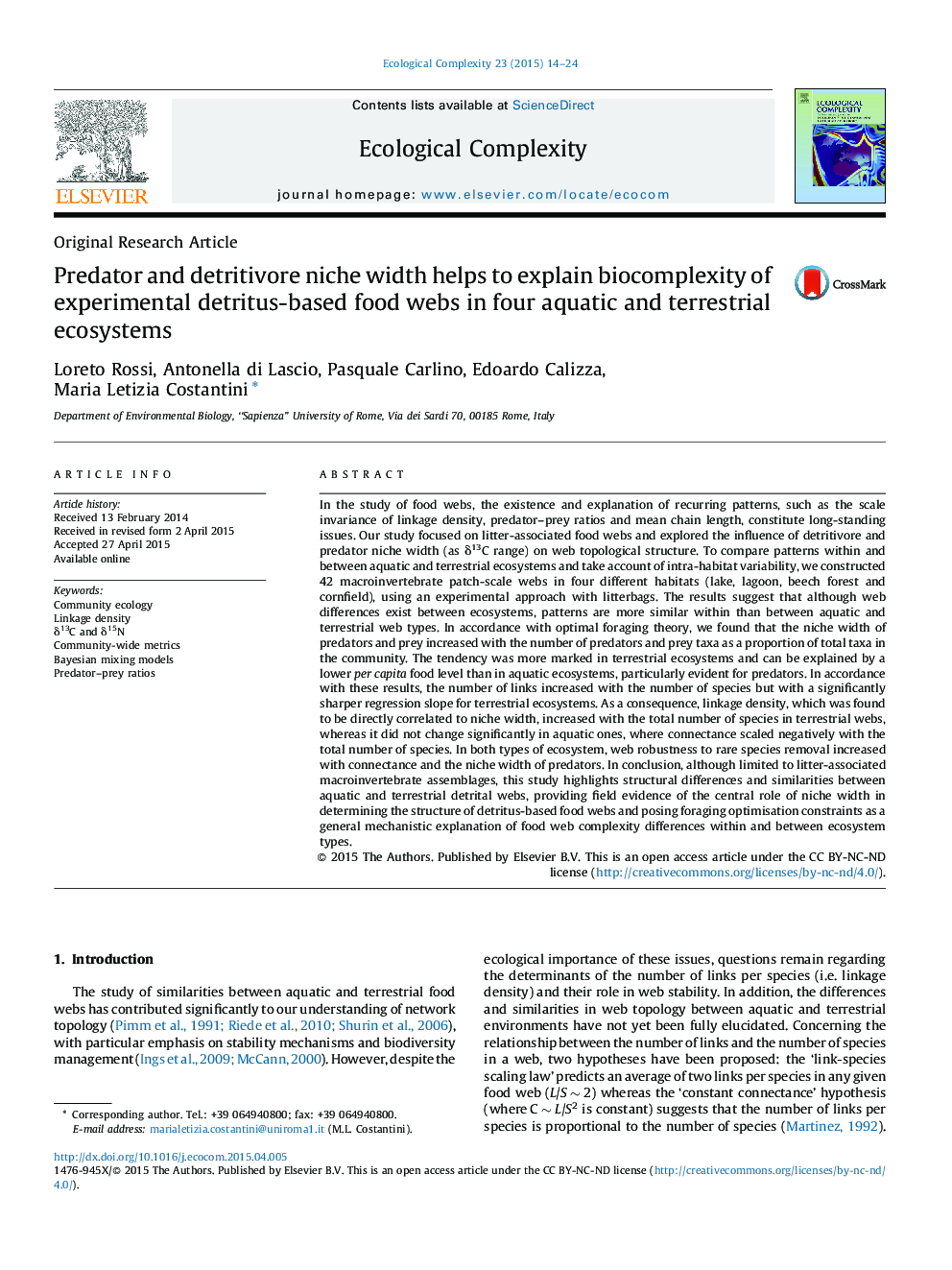| کد مقاله | کد نشریه | سال انتشار | مقاله انگلیسی | نسخه تمام متن |
|---|---|---|---|---|
| 6292489 | 1617091 | 2015 | 11 صفحه PDF | دانلود رایگان |
عنوان انگلیسی مقاله ISI
Predator and detritivore niche width helps to explain biocomplexity of experimental detritus-based food webs in four aquatic and terrestrial ecosystems
ترجمه فارسی عنوان
پراکنده و پراکنده کننده عرض پهن، به توضیح زیست سازگاری شبکه های مواد غذایی مبتنی بر مواد غذایی در چهار اکوسیستم آبی و زمین کمک می کند.
دانلود مقاله + سفارش ترجمه
دانلود مقاله ISI انگلیسی
رایگان برای ایرانیان
موضوعات مرتبط
علوم زیستی و بیوفناوری
علوم کشاورزی و بیولوژیک
بوم شناسی، تکامل، رفتار و سامانه شناسی
چکیده انگلیسی
In the study of food webs, the existence and explanation of recurring patterns, such as the scale invariance of linkage density, predator-prey ratios and mean chain length, constitute long-standing issues. Our study focused on litter-associated food webs and explored the influence of detritivore and predator niche width (as δ13C range) on web topological structure. To compare patterns within and between aquatic and terrestrial ecosystems and take account of intra-habitat variability, we constructed 42 macroinvertebrate patch-scale webs in four different habitats (lake, lagoon, beech forest and cornfield), using an experimental approach with litterbags. The results suggest that although web differences exist between ecosystems, patterns are more similar within than between aquatic and terrestrial web types. In accordance with optimal foraging theory, we found that the niche width of predators and prey increased with the number of predators and prey taxa as a proportion of total taxa in the community. The tendency was more marked in terrestrial ecosystems and can be explained by a lower per capita food level than in aquatic ecosystems, particularly evident for predators. In accordance with these results, the number of links increased with the number of species but with a significantly sharper regression slope for terrestrial ecosystems. As a consequence, linkage density, which was found to be directly correlated to niche width, increased with the total number of species in terrestrial webs, whereas it did not change significantly in aquatic ones, where connectance scaled negatively with the total number of species. In both types of ecosystem, web robustness to rare species removal increased with connectance and the niche width of predators. In conclusion, although limited to litter-associated macroinvertebrate assemblages, this study highlights structural differences and similarities between aquatic and terrestrial detrital webs, providing field evidence of the central role of niche width in determining the structure of detritus-based food webs and posing foraging optimisation constraints as a general mechanistic explanation of food web complexity differences within and between ecosystem types.
ناشر
Database: Elsevier - ScienceDirect (ساینس دایرکت)
Journal: Ecological Complexity - Volume 23, September 2015, Pages 14-24
Journal: Ecological Complexity - Volume 23, September 2015, Pages 14-24
نویسندگان
Loreto Rossi, Antonella di Lascio, Pasquale Carlino, Edoardo Calizza, Maria Letizia Costantini,
